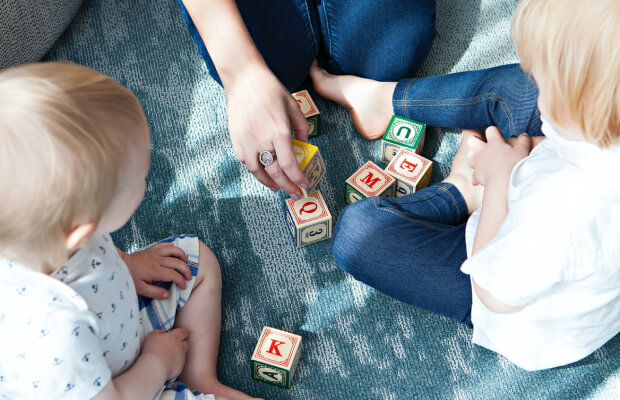What is dyslexia?
Understanding reading difficulties and what they mean for your child

Defining dyslexia
To understand what dyslexia is, we need to take a closer look at reading difficulties more broadly, how you can address them, and what are common misconceptions.
Dyslexia is a learning weakness in reading and writing, which impacts the reader’s ability to decode and comprehend written words fluently and with accurate speed.
Dyslexia impacts people’s ability to decode and comprehend written words. Concretely, this means that children with dyslexia have difficulties mapping written letters to the sounds they make. This impacts both their ability to read and to spell.

What does dyslexia look like in children?
When reading, dyslexic children shows a lot of hesitation: slow reading, a need to process each word or letter one by one.
When writing, they spell phonetically as they struggle with letter-to-sound correspondence and find it difficult to assimilate orthographic rules.
Not all children who struggle with reading, however, have dyslexia. Without a diagnosis, the line between reading deficits and dyslexia is blurry – both look similar in practice. but dyslexic children typically show other certains signs of dyslexia, depending on their age and level of development.
In reading:
- reading is slow and laborious
- guessing rather than reading words
- reading words that are not there
- missing words
In writing
- spell phonetically
- spell the same words differently every time
- ignore punctuation and capitalisation
- cannot read again what they wrote

What does this mean for children and their development?
Dyslexia impacts people’s ability to decode and comprehend written words. Children with dyslexia have difficulties mapping written letters to the sound they make. This impacts both their ability to read and to spell. This manifests itself in their reading through a lot of hesitation: slow reading, need to process each word or letter one by one. In writing, dyslexic children spell phonetically as they struggle with letter-to-sound correspondence and find it difficult to assimilate orthographic rules.
Some refer to it as a learning ‘disability’ or ‘disorder’, but we believe these terms are unhelpful when trying to understand the nuances of dyslexia.

Children, teens, and adults living with dyslexia might have a difficult time with fluency and speed in their reading comprehension, spelling, and writing. It is important to understand that these challenges are not intelligence-related and should not be portrayed as such.
In fact, dyslexics are often exceptional creative thinkers, with wonderful critical thinking and reasoning capabilities. Their ability to think outside of the box gives them an edge in creative fields such as entrepreneurship and visual arts, and their problem-solving skills help some to become excellent mathematicians and computer scientists. The terms ‘disorder’ and ‘disability’ could therefore discourage and limit a dyslexic’s potential.
The reality of the situation is that dyslexia is a real challenge, especially in a society that revolves around written communication. It is also very common. Because some cases of dyslexia go undiagnosed or missed, the exact percentage of the population that experience dyslexia is unknown, but experts believe it is as high as 17%. If we also consider children that experience consistent struggles with reading and writing without being dyslexic, more than 1 in 5 children experiences some form of difficulty with literacy skills.
What unfortunately gets overlooked is that reading weaknesses that are not classified as dyslexia have a similar impact on a person’s personal, academic, and professional development. This may mean that they do not benefit from the same level of support as dyslexics do, specifically within the educational system, even though they can benefit from the same methods of intervention.
Spotting a reading weakness is very similar to spotting signs of dyslexia. This includes difficulties with word decoding – where people have difficulty matching letters to their proper sounds – fluency and accuracy in reading, and reading comprehension. However, not everyone with a reading disorder may have the same “symptoms”, which makes it difficult to diagnose.
The understanding of dyslexia as a spectrum and not a definitive and distinct set of symptoms can help with understanding this differentiation. If you picture a scale with dyslexia and normal reading skills at either end, reading weaknesses would place anywhere in between.
Dyslexia and reading difficulties don’t just go away and they should not be seen as an unwillingness to learn, laziness, or poor intellect. But children do not “grow out of it”. They necessitate specific, adapted intervention. With effective intervention, especially when it is started early, people with dyslexia can improve their reading skills remarkably, helping them to successfully navigate their education and career. By understanding dyslexia and reading weaknesses better, you can start to understand your child, their learning process, and how you can support it.

How can you support struggling readers?
First off, you are already doing the right thing, informing yourself about learning difficulties and how they relate to your child’s situation. The next step is to find how to address it effectively.
The most important step you can take is to act fast. It is possible to prevent further difficulties with reading fluency and accuracy by establishing appropriate methods of intervention early on. If you suspect your child has dyslexia or reading difficulties, you don’t need to wait until you have received a dyslexia diagnosis to begin adapted intervention.
As time passes, the gap in reading skills will get wider and wider. This means there will be more ground to cover with remediation, but it will make it more difficult for children to follow other classes where reading comprehension is important. It will also bear a heavy toll on children’s self-esteem and confidence as their struggles with school continue.
That’s the reason why we have developed GoLexic. We know that access to professionals for diagnoses and intervention is limited. Waiting lists are long and intervention can be expensive. We have built an intervention app that is easy to use, effective, and fosters children’s autonomy and self-confidence.
Our program uses a tried and tested remediation method that ensures that children have solid foundations on which to build further literacy skills. Everything in this program has been developed to support the learning needs of children who struggle with written language. With every session, the program solidifies and expands the skills and automatisms acquired in previous sessions.
Whether your child has already been diagnosed, you are waiting for the diagnosis, or your child has not been diagnosed but has shown signs of reading difficulties, the GoLexic app can help you support your child in their reading and writing journey.

